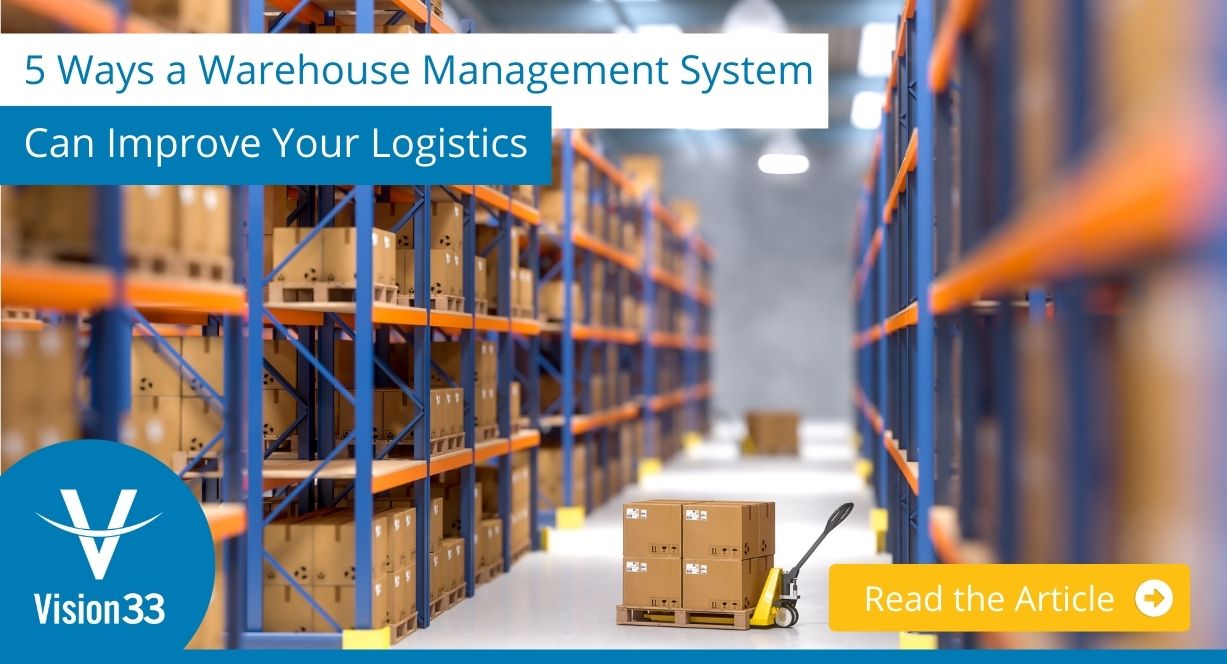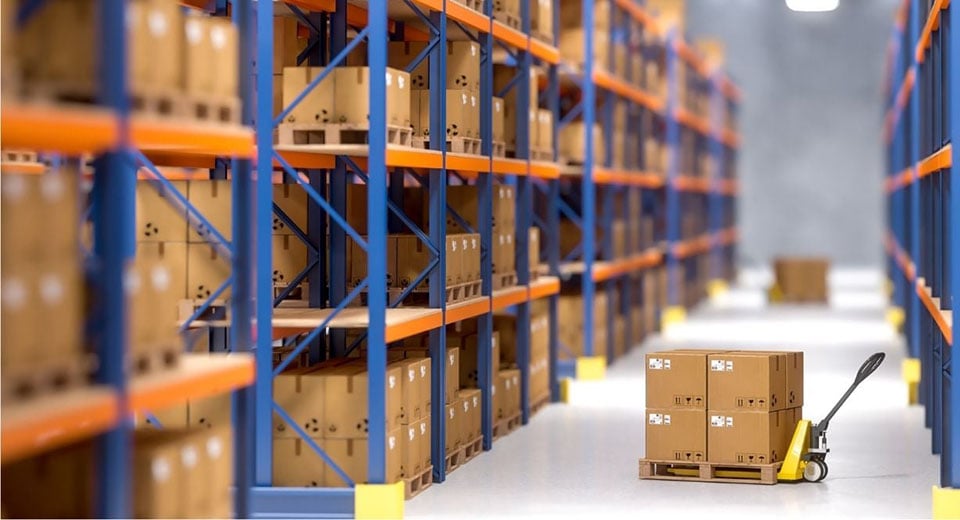Top 5 Reasons Professional Services Firms Need Cloud ERP
SAP Business ByDesignLearn how a cloud ERP solution like SAP Business ByDesign can improve human resource management and...

Blog > 5 Ways a Warehouse Management System Can Improve Your Logistics

Your warehouse is busy receiving and stocking goods, fulfilling orders, replenishing inventory, shipping, managing inventory and labor costs, handling equipment challenges, and more. And if your business has more than one warehouse, the challenges multiply.
The pandemic’s acceleration of eCommerce and required safety protocols have increased warehouse complexity. As we begin a new year in a new normal, ask yourself: Are my warehouse operations as productive and profitable as I’d like?
If the answer is no, it’s time to look closely at a warehouse management system (WMS). Here are five of today’s most prevalent warehouse challenges and how a WMS can overcome them.
Several factors contribute to your warehouse operational costs, and seemingly insignificant things add up. A common culprit is paper-based processes, which lead to wasted time and lost documents. Finding your stock becomes a guessing game as your workers run marathons around your warehouse. And if you’re not using bar code scanning, order mistakes and returns are piling up.
A WMS automates your warehouse processes so you can abandon the paper. It also identifies your fast-moving inventory so you can keep it close to your packing stations, reducing fill times on small or standard orders, and offers accurate, real-time data to optimize the scheduling of raw materials or goods, eliminating stockouts and excessive inventory.
Bottom line? A WMS can reduce your operational costs by 20-30% and significantly improve efficiencies.
Customers are happy when they receive the perfect order: the right product in the right quantity in the right condition at the right address. But without the right technology, orders can be far from perfect. And with the dramatic uptick in eCommerce, smaller orders at a higher frequency make it even more difficult to earn customers’ trust.
A WMS’s scanning device can be 10 times faster than manual transactions. Processing more transactions with higher accuracy increases productivity across your warehouse and makes the perfect order less elusive. You can also choose the right picking method within a WMS, which directly influences customer satisfaction, reduces picking costs, and affects your bottom line.
It’s impossible to accurately manage your inventory with disparate systems that can’t “talk” to each other, and tracking inventory in Excel is an exercise in futility. Both scenarios involve tedious, repetitive data entry and human error.
The right WMS facilitates easy processing of non-tracked, batch, and serial transactions and a flexible warehouse, zone, and bin structure—leading to nearly 100% inventory accuracy. This is true for a quantity basis and at a location-by-location level.
In a complex global supply chain where one disruption can wreak havoc, you need full forward and backward traceability, recall management, and audit trails. To protect your brand and reputation, you must ensure counterfeited goods don’t end up in your warehouse.
A WMS allows you to manage quality by changing and documenting the product quality status, including quarantined, released, blocked, and rejected. It also supports bidirectional traceability and provides unlimited batch attributes so you can register information critical to achieving electronic traceability. Easily track and trace products throughout the supply chain by item code, barcode, batch number, and more—including complete visibility of ingredients used to produce the batch/lot, movements, and stock levels.
Picking, packing, shipping, and managing various logistical flows is challenging. So is developing direct-to-consumer routes for a broad range of distributed products.
A WMS simplifies inbound and outbound logistics. It facilitates inbound transactions (e.g., container and PO receiving, pallet build, and directed put-away) and outbound transactions (e.g., pick management, including picking with shelf-life considerations, inventory allocation, and shipping).
Put aside an hour to watch an on-demand recording featuring BoyumIT. You’ll learn which questions to ask to determine if you’re ready for a WMS, get an overview of BoyumIT’s Produmex WMS, and see a demo of the solution to understand how it has helped companies like yours transform logistics to boost productivity and profitability.
Subscribe to our newsletter to receive our latest blog posts, case studies and ERP news delivered straight to your inbox.
Learn how a cloud ERP solution like SAP Business ByDesign can improve human resource management and...
Embracing new technology isn’t complicated. Learn about cloud ERP, automation, and integration...
SAP Business ByDesign is a powerful cloud-based ERP solution that helps project managers plan,...
Recieve our latest blog posts, case studies, and ERP news
delivered straight to your inbox.